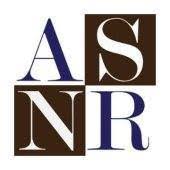Specialty Designation
Fellowship
Pursuing more training
34
In same state as program
28
In NHSC or similar underserved area
2
Number of accredited programs
91
Length of accredited training
Minimum number of prior years required
Offers graduate year 1 positions, available immediately upon medical school completion
No
Average number of PY1 interviews
25.20
Percent of programs requiring Step 1 score for interview
89.00
Percent of programs requiring Level 1 score (for DOs) for interview
54.90
Total number of active residents/fellows
Average number of residents/fellows
2.80
Average percent female
23.00
Average percent international medical graduates
25.60
Average number of full-time physician faculty
10.20
Average number of part-time physician faculty
1.20
Average percent female full-time physician faculty
22.90
Average ratio of full-time physician faculty to resident/fellow
4.10
Average hours on duty per week
49.20
Average maximum consecutive hours on duty
15.10
Average days off duty per week
1.70
Average percent of training in hospital outpatient clinics
38.50
Average percent of training in non-hospital ambulatory care community settings
21.00
Average number of days of vacation
18.60
Average resident/fellow compensation
Specialty Overview
Neuroradiology comprises both imaging (computed tomography, magnetic resonance imaging, plain film interpretation, neurosonography, and nuclear radiology) and invasive procedures related to the brain, spine and spinal cord, head, neck, and organs of special sense (eyes, ears, nose) in adults and children.
Special training and skills are required to enable the neuroradiologist to function as an expert diagnostic and therapeutic consultant and practitioner. In addition to knowledge of imaging findings, the fellows must learn the fundamentals of pathology, pathophysiology, and clinical manifestations of the brain, spine and spinal cord, head, neck, and organs of special sense.
